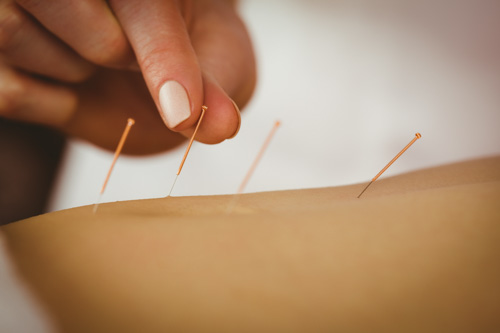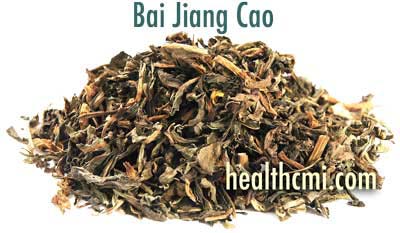Acupuncture and Chinese herbs eliminate pelvic inflammatory disease (PID). This disorder is often due to an infection in the uterus, fallopian tubes, or ovaries. PID may cause infertility due to residual scarring or congealed exudate. Chlamydia and gonorrhea are common etiologies but PID may be caused many other pathogenic influences.
Acute PID may require hospitalization and emergency use of antibiotics or surgery. Chronic PID may not resolve through the use of conventional therapies including antibiotics, anti-inflammatory medications, and multiple exploratory surgeries. Fortunately, researchers confirm that a combination of acupuncture and Chinese herbal medicine is effective for the resolution pelvic inflammatory disease.
Based on clinical research, researchers from the Chongqing Institute of Chinese Medicine conclude that acupuncture and herbs achieve significant positive patient outcomes for patients with chronic PID. Chinese herbal medicine, as a standalone therapy, achieved a 77.5% total effective rate in their clinical trial. Acupuncture, as a standalone therapy, achieved a 75% total effective rate. A therapeutic protocol combining acupuncture and Chinese herbal medicine achieved a 92.5% total effective rate. The data confirms that an integration of both acupuncture and herbs into a treatment protocol achieves optimal positive patient outcome rates.
The total effective rate was based on improvements of both objective and subjective outcomes. Improvements include the reduction or elimination of abdominal pain, lower abdominal bloating, vaginal discharge (leukorrhea), menstrual pain, irregular menstruation, fatigue, and pelvic compression test pain. The total effective rate also includes significant improvements or elimination of endometrial hyperplasia, pelvic masses, vaginal secretion leukocyte count, and the serum leukocyte and neutrophil count. Six, nine, and twelve month follow-up medical examinations confirm that acupuncture and herbal medicine maintain lasting results and prevent relapses of PID.
The study was comprised of three treatment groups equally randomized from 120 patients with pelvic inflammatory disease. Group one received acupuncture. Group two was treated with herbal medicine. Group three was treated with both acupuncture and Chinese herbal medicine. The patients in the study suffered from PID related complications including generalized bodily inflammation, salpingitis, hydrosalpinx, oophoritis, oviduct cysts, pelvic connective tissue inflammation, and endometritis. PID is due, at least in part, to the differential diagnostic pattern of damp heat and toxins with blood stasis, according to Traditional Chinese Medicine (TCM) principles.
Acupuncture was applied to primary acupoints including:
- SP6, Sanyinjiao
- CV6, Qihai
- CV4, Guanyuan
- ST29, Guilai
- SP10, Xuehai
- SP9, Yinlingquan
Supplementary points were added based on differential diagnostics including:
- CV3, Zhongji
- ST28, Shuidao
- KD3, (Taixi)
- KD7, Fuliu
- BL23, Shenshu
A reinforcing and reducing method was applied until the arrival of deqi. Next, the needles were retained for thirty minutes per acupuncture treatment session. The needles were manually manipulated every ten minutes. Acupuncture was applied once per day for seven days followed by a three day break. This process was applied seven times yielding seven courses of care totaling 49 acupuncture sessions per patient.
Herbal medicine involved the oral administration of Qing Re Li Shi Hua Yu Tang. The herbal formula included a variety of ingredients including:
- Jin Yin Hua, 15 g
- Lian Qiao, 15 g
- Pu Gong Ying, 15 g
- Zi Hua Di Ding, 15g
- Sheng Ma, 10 g
- Bai Jiang Cao, 15 g
- Yin Chen Hao, 15 g
- Pu Huang, 15 g (in cloth wrap)
- Gui Ban, 30 g (decoct beforehand)
- Hu Po, 5 g (mix powder into final decoction)
- Dan Shen, 15 g
- Chuan Xiong, 15 g
- Yi Yi Ren, 30 g
- Jie Geng, 10 g
Additional herbs were added to the formula dependent upon variations in the differential diagnoses. This included taking into account fevers, abdominal pain, fatigue, and pelvic masses. Additional herbs included Da Huang, Chuan Lian Zi, Yan Hu Suo, Huang Qi, San Leng, and E Zhu. The decoction was taken twice per day for a total of sixty days.
The 92.5% total effective rate for the combination of acupuncture with Chinese herbal medicine strongly indicates that the integrative protocol is optimal. These findings are consistent with Lini et al. whose research concludes that acupuncture combined with herbal medicine has a total effective rate of 97.8% for the treatment of PID.
Lini et al. used different herbs and acupuncture points in their investigation. The herbs included:
- Dang gui 10g
- Gan Jiang 5g
- Xiao Hui Xiang 10g
- Wu Ling Zhi 5g
- Wu Zhu Yu 10g
The acupuncture points included:
- Zhong Ji (CV3)
- Guan Yuan (CV4)
- Qi Hai (CV6)
- San Yin Jiao (SP6)
- Zu San Li (ST36)
- Zi Gong (extra point)
Herbal medicine, as a standalone therapy, achieved an 82.2% total effective rate with a relapse rate of 22.2%. A clinical trial group using both acupuncture and herbs achieved a 97.8% total effective rate with a relapse rate of 6.7%. Both investigations are consistent; the work of Zhou et al. and Lini et al. demonstrate significant clinical benefits in combining acupuncture and Chinese herbal medicine for patients with chronic PID.
The Healthcare Medicine Institute (HealthCMi) provides many acupuncture continuing education courses on the treatment of PID with Chinese herbal medicine and acupuncture. The courses are pre-approved for state acupuncture CEUs and NCCAOM Diplomate PDAs and are in both written and video formats. The course entitled PID and Chinese Medicine, Part One is an example of an online course in the written format. The course entitled PID and Cervicitis is an example of a video format online course. Both types of courses present biomedical and TCM approaches to the elimination of PID.
References:
Zhou, P. Zeng, Z. H. & Xiang, Y. H. (2014). Clinical Study on Chronic Pelvic Inflammatory Disease with Syndrome of Damp-heat and Blood-stasis by Qing-Re Li-Shi Hua-Yu Decoction Combined with Acupuncture Therapy. World Science and Technology – Modernization of Traditional Chinese Medicine. 16 (12).
Ruan Lini, Dong Yunan, Leng Xiulan, Analysis of Chinese Medicine Acupuncture Combined Treatment for 90 Cases of Chronic Pelvic Inflammatory, Medical Innovation of China, 2015 (17).


